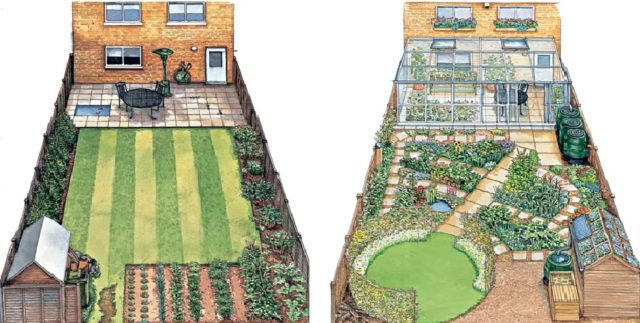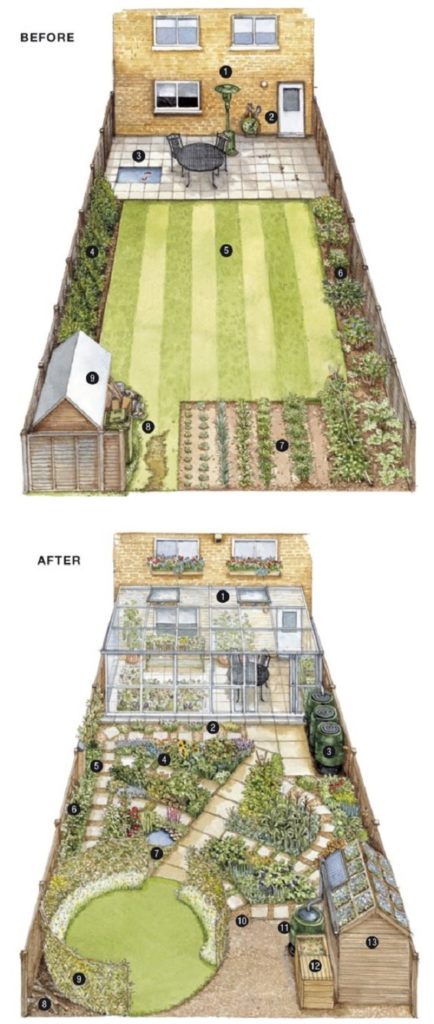Urban areas are not very appropriate for eco-gardening, as the environment is not a suitable one. But John Walker has found an ingenious way to eco-fit your garden and shares the secret it all in his book ‘How to Create an Eco Garden’. The essential part, as the article says, is to incorporate some key elements in your garden that will help it become more sustainable and eco-friendly. There is an example of a transformed garden in the article, so you can take a look at the image for extra info. In case you are wondering what exactly is eco-fitting, it’s a transformation your garden goes through in order to become environmentally friendly. This process will make use of your already existing outdoor elements. So eco-fitting is basically about making your garden more self-sustainable, eco-friendly and dependent on renewable energy sources. The basic principles of this type of gardening would be: recycling of waste materials, use of sunlight as an energy source, reuse of rainwater, growing your own food, creating a proper environment for you and your family and many more. For additional details and info, please read the extract from the link below or purchase ‘How to Create an Eco Garden’, by John Walker!
Before eco-fitting
1 A gas-powered patio heater releases the polluting greenhouse gas carbon
dioxide.
2 Energy-intensive mains
tap water is used for watering and for running a lawn sprinkler.
3 Goldfish dominate the small pond at the expense of wildlife.
4 An overgrown x Cupressocyparis leylandii hedge has been cut down, leaving ugly stumps. Its roots have starved the soil.
5 Lawn mowing uses fossil fuel, creating air and noise pollution and more work.
6 Dry and bare border soil, routinely sprayed with weedkiller, has little appeal for wildlife. Double nectarless flowers attract few insects.
7 In the vegetable plot, crops grow in poor, dry soil. Synthetic fertilisers encourage sappy, pest- and disease-prone growth; plants are sprayed regularly with pesticides and slug pellets are used.
8 Valuable garden and kitchen waste is binned and lost to municipal composting.
9 Rainwater runs off the shed roof.
After eco-fitting
1 A lean-to greenhouse warms up as it absorbs sunlight energy, creating a space in which to grow edible and ornamental plants; some slabs are removed to create soil beds. Heating is not used during winter, when only frosthardy food crops are grown.
2 Herbs near the house are convenient to harvest.
3 Rainwater from the greenhouse roof is stored in linked water butts.
4 The lawn is replaced by a decorative kitchen garden. Vegetables, fruit and herbs intermingle with flowers rich in pollen and nectar, which attract beneficial pollinating and pest-eating insects. The paths are made of reclaimed natural stone. Columnar fruits utilise vertical growing space.
5 An insect hotel attracts solitary bees and other useful insects.
6 Espalier apples and pears and currant cordons are now trained on the fence. The hedge has been removed and the soil improved.
7 Slug-eating frogs breed in a fish-free wildlife pond.
8 Log piles create a wildlife habitat.
9 A living willow “fedge” encloses a grass play area, edged by uncut grass and wildflowers. A simple push mower is used.
10 Wood chips are used as a mulch between the stepping stones; weedkiller is not used (or required).
11 Rainwater fills a recycled plastic water butt.
12 All garden and kitchen waste is composted in recycled wooden bins, then returned to the garden to improve the soil.
13 The rainwater-harvesting shed is planted with a pretty living roof, and a solar panel charges a battery to operate the shed light.
How to Create an Eco Garden: The practical guide to greener, planet-friendly gardening. Step-by-step techniques, more details HERE….
















